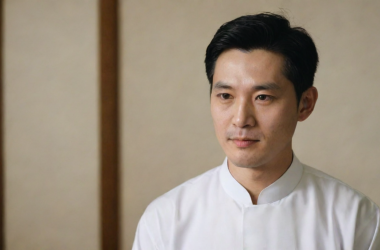“The first batch of middle-class people who went to Singapore are now bankrupt!” This sentence has recently been widely circulated on the internet and has become a focal point of heated discussion. Following the announcement by the Singapore government and China of visa-free measures before the new year, this small country with a total population of approximately 5.686 million, with Chinese accounting for 74%, has received unprecedented attention. Singapore, as one of the Four Asian Tigers of economic development, has long been a destination coveted by the global wealthy class.
In wealthy circles, there’s a prevailing belief: if you want top-tier job opportunities, go to Switzerland; if you want your children to enjoy a first-class education system, choose the United States. Singapore, on the other hand, has become synonymous with a tax haven among the wealthy and is the preferred location for setting up family offices. Singapore not only lacks an inheritance tax, but also does not levy capital gains tax and gift tax. As such, many wealthy individuals from various countries, including China, have set up a significant number of family offices there.
Notable individuals like Zhang Yong’s wife Shu Ping, founder of the famous hotpot chain Haidilao, James Dyson of Dyson Company, and Ray Dalio of Bridgewater Associates have all set up family offices in Singapore and have chosen to reside there long-term. However, over the past two years, the Singapore government has indicated that it will strengthen taxation on the wealthy and raise the investment threshold for family offices. Last year, the additional buyer’s stamp duty for foreign property purchasers skyrocketed to 60%. A ten-million-dollar luxury house could be taxed as much as 6 million Singapore dollars, reflecting Singapore’s tough stance on the wealthy.
This Spring Festival, Singapore’s tourism industry experienced a surge in growth, astonishingly up by 960%. However, behind this rapid glamour, prohibitive prices deter the average citizen. Hotel and homestay prices are sky-high, lobster ramen sells for upwards of 3000 RMB, and a small bottle of cola costs 11 RMB. A mother who took her child to the hospital for diarrhea faced a bill of over 8000 RMB for just one night. Additionally, with a strict system of fines, a slight misstep can lead to hefty penalties or even imprisonment. In Singapore, middle-class families face daunting challenges in their daily lives.
Looking across Asia, if you want to find a comfortable place to live without worrying about significant wealth depreciation, I believe there are two options: Japan and Thailand. Thailand is an excellent destination for tourism and retirement, with a cost of living on par with China’s second-tier cities. Japan, whether for tourism or residential investment, appeals to people of all ages.
During my last visit to Japan, I found that in areas such as Osaka and Tokyo, the cost for a decent hotel for one night was about 500 to 600 RMB, and sometimes even lower during promotional offers. Opting for conveyor belt sushi during lunch, a meal for four cost about 360 RMB. Looking at other affordable choices like authentic miso ramen and other food and everyday items, the prices are quite reasonable. Areas like Osaka’s Shinsaibashi, Tokyo’s Chuo District, and Shinjuku District are packed with a variety of Chinese restaurants offering Northeastern dumplings, Sichuan cuisine, and Peking Duck — you name it. In Japan, although taxi fares are somewhat expensive, everyday expenses are not much different from those in China. After all, most people prefer to use the convenient and fast subway system for everyday travel, and even in the suburbs, subway stations are readily available.
Japan, as a developed country in Asia, is known for its highly developed social systems, quality education, comprehensive institutions, and welfare systems. At the same time, the cost of living in the country is not particularly high, which is an important reason why many middle-class and ordinary people choose to live in Japan.
Among the friends I know who have lived in Japan for more than a decade, each one has a unique story. For example, Lao Yang from Dalian, who has moved to Osaka for 18 years and now works at a car rental company at the age of 50. Lao Yang first arrived in Osaka in 2005, initially wanting to earn a high salary; he was serious and hardworking in his job. Before long, he met his current Japanese wife, a kind and virtuous woman. They quickly got married, had children, and Lao Yang obtained permanent residency in Japan. In developed countries and cities, the cost of labor tends to be high, as in the case of taxi and moving services, which suggests that as long as one works hard, there is an opportunity to earn a considerable income. For example, in Osaka, renting a car with a driver for a day can cost more than 3,000 yen; after the company’s cut, Lao Yang can still make a decent income.
A Yong, who has been working in Tokyo for 9 years, spends most of his daily expenses on food. Japan provides a welfare benefit called the housing rental subsidy for those without housing. Many companies offer this type of subsidy, which varies depending on the company, and even employees at different levels within the same company may receive different levels of subsidies. If the employee’s company is in good condition and the individual holds a higher position, then the subsidy can be enough to cover the rent. A Yong mentioned that his real estate company offers a rental subsidy ranging from 20,000 to 250,000 yen, allowing him to live in a high-end apartment in the city center without paying much out of pocket. Some large companies even directly purchase or rent several floors of a building as employee dormitories, charging only a small fee. In addition, daily transportation costs are often reimbursed by the company, up to more than 50,000 yen per month, making A Yong’s expenses for housing and transportation very low, with only food and entertainment accounting for his expenditures.
Grace, originally from Japan, purchased an apartment in Umeda, the core business district of Osaka, which appreciated by 30% in two years. After graduating, Grace stayed in Japan and bought a high-end apartment in Umeda in less than three years; its value has risen sharply since then. Her apartment is not only located in the center of the city but also overlooks the surrounding skyscrapers from the rooftop. It has comprehensive public facilities, including a lounge, meeting rooms, a gym, a yoga studio, and a relaxation area, all of which are free to use. In Japan, unlike in our environment, where many young people struggle to buy a home after graduation, the home buying mechanism is more humanized. Purchasing a home in Japan can be done with zero down payment, with a loan period of up to 30 years, and interest rates are very low, with the lowest at 0.29%. This means that even for those who want to live in a high-quality apartment in a prime location, the difference between rent and a monthly mortgage payment is not very large.
With the steady rise in Japanese real estate prices, more and more young people who have been on the fence are starting to join the ranks of home buyers. The increasing property prices have attracted the attention of buyers around the world, including Chinese property purchasers. Whether celebrities are buying mansions in Japan for privacy or middle-class families are looking for investment opportunities, the real estate market in Japan has become hot due to multiple factors.
Continuous Rise in Real Estate Prices: A Clear General Uptrend
The first to bear the brunt is the universal rise in real estate prices. A general increase in real estate prices means that regions across the country have all seen price hikes. For example, in the capital region alone, prices have soared by 61% within a year. Not to mention major cities like Tokyo and Osaka, even smaller cities and suburban areas around them are experiencing only increases, with no declines. The new housing market is particularly eye-catching, with the average price of new homes in Tokyo’s 23 wards continuously breaking records, rising to 115.61 million yen, an increase of 36.7%, with sales volume also growing by 40.9%.
Positive Stock Market Trends
Beyond the real estate market, Japan’s stock market has also shaken off its long-term slump and reached new highs continuously. The Nikkei Index has especially achieved remarkable gains, consistently climbing since last year, breaking through 39,000 points to date.
Declining Exchange Rates Become an Investment Advantage
Another point not to be overlooked is that the continued decline in the yen’s exchange rate has had a significant impact on the real estate market. The exchange rate of yen to yuan has fallen to 0.047, coupled with the strong uptrend in Japan’s real estate prices, many people are looking for opportunities to invest in Japanese real estate, from small apartments to valuable core district skyscrapers. Investors believe that even if the exchange rate rebounds in the future, they can still make substantial profits from their investments.
Challenges Facing Japan: Aging Population and Low Birth Rate
Despite this, Japan’s economy also faces the severe challenges of an aging population and falling birth rates. The number of newborns continues to hit record lows, dropping to 750,000, a decline of 5.1%. By contrast, in other countries, it is very difficult for older people to find jobs, but in Japan, elderly employees with grey hair can be seen everywhere, diligently working.
The recovery of Japan from the so-called lost 30 years demonstrates their experience in pension systems, social welfare, and employment of older workers, which is of certain reference significance for other countries. However, nothing is absolute, and the future of the real estate and stock markets is still full of uncertainties, with many questions awaiting answers through in-depth discussion.
At the break of dawn, Mr. Mi and the eleven heroes will set out on their fifth in-depth exploration of Japan. All live situations of this exploration will be shared in real-time in a dedicated group. Here, everyone can participate in enthusiastic discussions and instant Q&A, talking freely about their observations and experiences.
Friends interested in this in-depth exploration of Japan are welcome to scan the corresponding QR code to join our group for free and jointly witness and experience this unique cultural journey.






